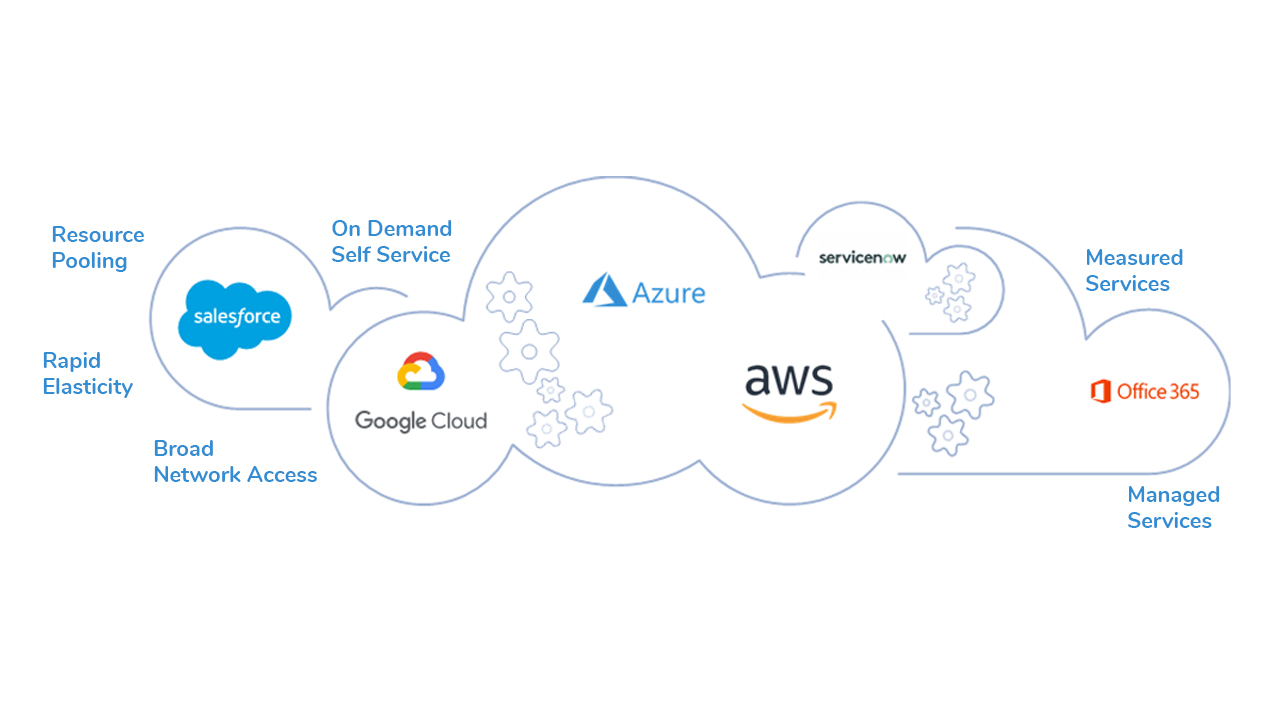LinkDaddy Cloud Services Decoded: Expert Insights into Universal Cloud Service Advancements
LinkDaddy Cloud Services Decoded: Expert Insights into Universal Cloud Service Advancements
Blog Article
Simplify Your Framework With Cloud Services
As companies navigate the ever-evolving landscape of technology and data monitoring, the role of cloud solutions in streamlining framework has ended up being increasingly famous. Just how can services efficiently browse this shift and genuinely open the possibility of cloud services for streamlining their infrastructure?
Benefits of Cloud Solutions
Cloud solutions use a streamlined approach to managing IT framework, supplying companies with adaptability, cost-efficiency, and scalability. One of the key benefits of cloud solutions is the scalability they offer. Businesses can easily scale their resources up or down based on need, guaranteeing they just pay for what they utilize. This adaptability is particularly advantageous for businesses with fluctuating requirements or those experiencing development.
Additionally, cloud solutions get rid of the demand for businesses to purchase costly equipment and software program. This cost-efficiency is a considerable benefit, specifically for tiny to medium-sized business seeking to decrease ahead of time expenses. By utilizing cloud services, businesses can access top quality IT resources without the hefty price linked with conventional facilities arrangements.
Additionally, cloud services give organizations with the versatility to access their information and applications from anywhere with a web connection. This level of accessibility boosts collaboration amongst groups, allows remote work, and enhances general productivity. The adaptability used by cloud services equips organizations to adapt quickly to altering market problems and client needs.
Cost Savings and Scalability
Along with the operational advantages highlighted earlier, the combination of cloud services right into a firm's facilities comes up with substantial price financial savings and boosted scalability. Cloud services provide a pay-as-you-go model, enabling organizations to range resources up or down based on current demands, thereby preventing the costs connected with preserving excess capability. This adaptability makes it possible for firms to adjust promptly to rising and fall needs without incurring unnecessary expenses.
Moreover, cloud solutions eliminate the need for ahead of time investments in software and hardware, lowering capital investment. Operating costs are likewise lessened as business no longer need to manage and preserve physical web servers, bring about reduced energy consumption and IT staffing expenses. Furthermore, cloud services give automatic updates and upkeep, making certain that the framework remains safe and up-to-date without requiring manual treatments.
Enhanced Security Measures
Applying rigorous safety and security measures is extremely important when incorporating cloud services right into a firm's facilities to guarantee and guard delicate data conformity with industry regulations. Cloud solution providers provide enhanced safety features such as data file encryption, firewall program protection, and multi-factor authentication to minimize cybersecurity threats.
In addition, routine safety audits and compliance evaluations assist make certain and recognize susceptabilities adherence to industry criteria. Business can likewise take advantage of functions like automatic security updates and real-time threat surveillance given by cloud company. By prioritizing safety actions and remaining proactive in addressing prospective risks, services can confidently leverage cloud services while protecting their valuable information from unauthorized access or breaches.
Transitioning to Cloud Facilities
To efficiently incorporate cloud solutions into a company's facilities, a structured technique that addresses the shift towards cloud-based options is important. Transitioning to cloud framework entails careful preparation and implementation to ensure a smooth movement procedure. The very first step is to analyze the existing framework and figure out which systems and applications are webpage ideal for migration to the cloud. This examination needs to consider variables such as information level of sensitivity, compliance requirements, and efficiency requirements.
When the evaluation is full, a movement method should be developed. This strategy must describe the timeline, resources, and responsibilities for relocating each component to the cloud. It is necessary to communicate this strategy clearly to all stakeholders to ensure placement and decrease disturbances throughout the transition.
During the movement monitoring, testing and procedure are critical to identify and address any type of problems promptly. Routine checkpoints need to be established to track development and make essential modifications. In addition, training for employees on using cloud solutions ought to be offered to guarantee an effective transition and maximize the advantages of the new infrastructure.
Best Practices for Cloud Adoption
Effective adoption of cloud solutions depends upon the critical alignment of organization purposes with technical capabilities and business readiness. To ensure a smooth change to the cloud, companies ought to begin by conducting an extensive analysis of their current facilities and identifying which work are best matched for cloud movement. It is vital to entail essential stakeholders from different departments in the decision-making process to acquire buy-in and attend to any worries at an early stage.
An additional ideal technique for cloud adoption is to focus on safety and conformity. Organizations should very carefully review the protection steps used by cloud provider and ensure that their information is protected according to industry standards and governing needs. Applying durable data file encryption, gain access to controls, and regular safety audits can aid minimize threats connected with cloud fostering.

Conclusion

As businesses navigate the ever-evolving landscape of innovation and information administration, the role of cloud services in simplifying framework has come to be progressively popular - cloud services press release. How can services efficiently navigate this transition and genuinely open the possibility of cloud services for streamlining their infrastructure?
Cloud solutions use a streamlined method to managing IT infrastructure, giving businesses with flexibility, scalability, and cost-efficiency. By utilizing cloud services, services can access top quality IT sources without the significant rate tag connected with typical infrastructure arrangements.
To ensure a smooth transition to the cloud, companies need to begin by conducting a comprehensive assessment of their current framework and determining which workloads are best suited for cloud migration.
Report this page